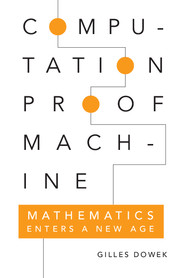Book contents
- Frontmatter
- Dedication
- Contents
- Introduction: In Which Mathematics Sets Out to Conquer New Territories
- PART ONE Ancient Origins
- PART TWO The Age of Reason
- Part Three Crisis of the Axiomatic Method
- 9 Intuitionistic Type Theory
- 10 Automated Theorem Proving
- 11 Proof Checking
- 12 News from the Field
- 13 Instruments
- 14 The End of Axioms?
- Conclusion: As We Near the End of This Mathematical Voyage …
- Biographical Landmarks
- Bibliography
- References
12 - News from the Field
from Part Three - Crisis of the Axiomatic Method
Published online by Cambridge University Press: 05 May 2015
- Frontmatter
- Dedication
- Contents
- Introduction: In Which Mathematics Sets Out to Conquer New Territories
- PART ONE Ancient Origins
- PART TWO The Age of Reason
- Part Three Crisis of the Axiomatic Method
- 9 Intuitionistic Type Theory
- 10 Automated Theorem Proving
- 11 Proof Checking
- 12 News from the Field
- 13 Instruments
- 14 The End of Axioms?
- Conclusion: As We Near the End of This Mathematical Voyage …
- Biographical Landmarks
- Bibliography
- References
Summary
the idea that a proof is not constructed merely with axioms and rules of inference but also requires computation rules has come a long way: in the early seventies, this idea pervaded Martin-Löf's type theory and, since then, it also constitutes the heart of several works on the computer processing of mathematical proofs. These works study mathematical theories and proofs as objects, which they consider from the outside: in other words, these are works of logic. Mathematics, however, never evolves under the sole influence of logic. For a change to occur, something must be brought to “field” mathematics – that is, to mathematical practice.
In order to determine whether this calling in question of the axiomatic method is trivial or essential, it is important that we, too, observe it from the field. Therefore, the following chapter shall contain examples – such as the four-color theorem, Morley's theorem, and Hales' theorem– that do not deal with logic but with geometry.
THE FOUR-COLOR THEOREM
In the middle of the nineteenth century, a new mathematical problem appeared: the four-color problem. When one colors in a map, one may choose to use a different color for each region on the map. A thriftier artist may decide to use the same color twice for countries which have no common border. In 1853, this idea led Francis Guthrie to seek and find a way of coloring in a map of the counties in Great Britain using only four colors. Since sometimes four neighboring counties touch, two by two, one cannot use fewer than four colors. As a consequence, the number of colors necessary to color in this map is exactly four.
The problem of the number of colors necessary to color in a map of British counties was thus solved, but Guthrie then wondered whether this property was specific to that map, or whether it might be extended to all maps. He formulated the hypothesis that all maps could be colored in with a maximum of four colors – yet he failed to prove it.
- Type
- Chapter
- Information
- Computation, Proof, MachineMathematics Enters a New Age, pp. 111 - 123Publisher: Cambridge University PressPrint publication year: 2015



